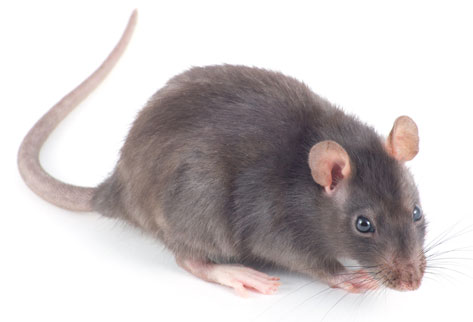Rats can be referred to as commensal rodents because they thrive in rural areas, suburbs, and cities equally. They establish paths for foraging and, though distrustful and careful around strange objects, will travel great distances following along the same route. Because of their distrust and skepticism, they are particularly difficult to trap. Large populations develop a hierarchy ruled by dominant, stronger rats over the subordinate, weaker ones. When rats are threatened, they become extremely aggressive. They can bite, chase, fight, and “box”. They have significant defensive postures such as “belly-up” and “sidling”.
Signs of A Rat Infestation
Evidence of rat activity or infestation can include the following:
- Grease or dirt marks on floorboards or walls
- Rat droppings
- The presence of living or dead rats
- Pathways through grass or vegetation leading to your house or building
- Presence of holes in walls or floorboards or damaged materials such as wood or plastic (teeth marks or chewing marks)
Rat Control Solutions
There are any number of rat traps on the market, but the problem with traps is that once you capture a rat, you have to get rid of it. If the rat doesn’t die in the trap, you run the risk of getting bitten. No one wants to get bitten by a rat. They are notorious for spreading disease. Poisons are usually effective but can be dangerous when mishandled.
Your best bet is to call in the professionals. Because rats are extremely intelligent and educate themselves about their surroundings and pathways, baits and traps are frequently ignored. Professionals are trained not only in how to kill pests but control their breeding, thereby assuring you of a pest free environment in the future as well as in the present. Pest control technicians are specially educated in the behavior of all of the pests that they encounter in their daily routines.
Common Rat FAQs
- When do rats ordinarily enter homes?
Rats will enter your home as a method of protection. Usually, if they are all set to make a nest and give birth, which they do year round, they will look for a place that is warm, comfortable, and protected. There is no particular time of year – they do this all the time.
- What makes rats choose one home over another?
It isn’t what you think. Just because a house is dirty doesn’t mean that rats are going to choose that home. If there is shelter, water, and food – it is the perfect environment. Food can be pet waste, birdseed, or pet food – not necessarily people food. They are attracted to the outside of your home first by adequate shelter and cover in landscaping such as plush, heavy foliage. Even if a rat weighs one pound, it can squeeze through a tiny crack or hole on the outside of your house the size of a quarter or measuring a half-inch.
- How do rats get into a building?
As just mentioned, the whole or crack through which they enter does not have to be very big at all. Rats can access low points and high points and are adept at climbing rough surfaces such as stucco, logs, rock, or brick. Rats find attic louvers and foundation vents attractive as well.
Need Help with Rat Control Today?
At PEST, we continually strive to provide the best possible protection for your property through a series of innovative solutions that are safe, effective, eco-friendly, and responsive. We take charge of the problem infestation and make it our personal goal to remedy the situation. If you have noticed rats on your premises or think you may have them, call us at 212.945.0868 or email info@pesteliminationsystems.com to get started.
